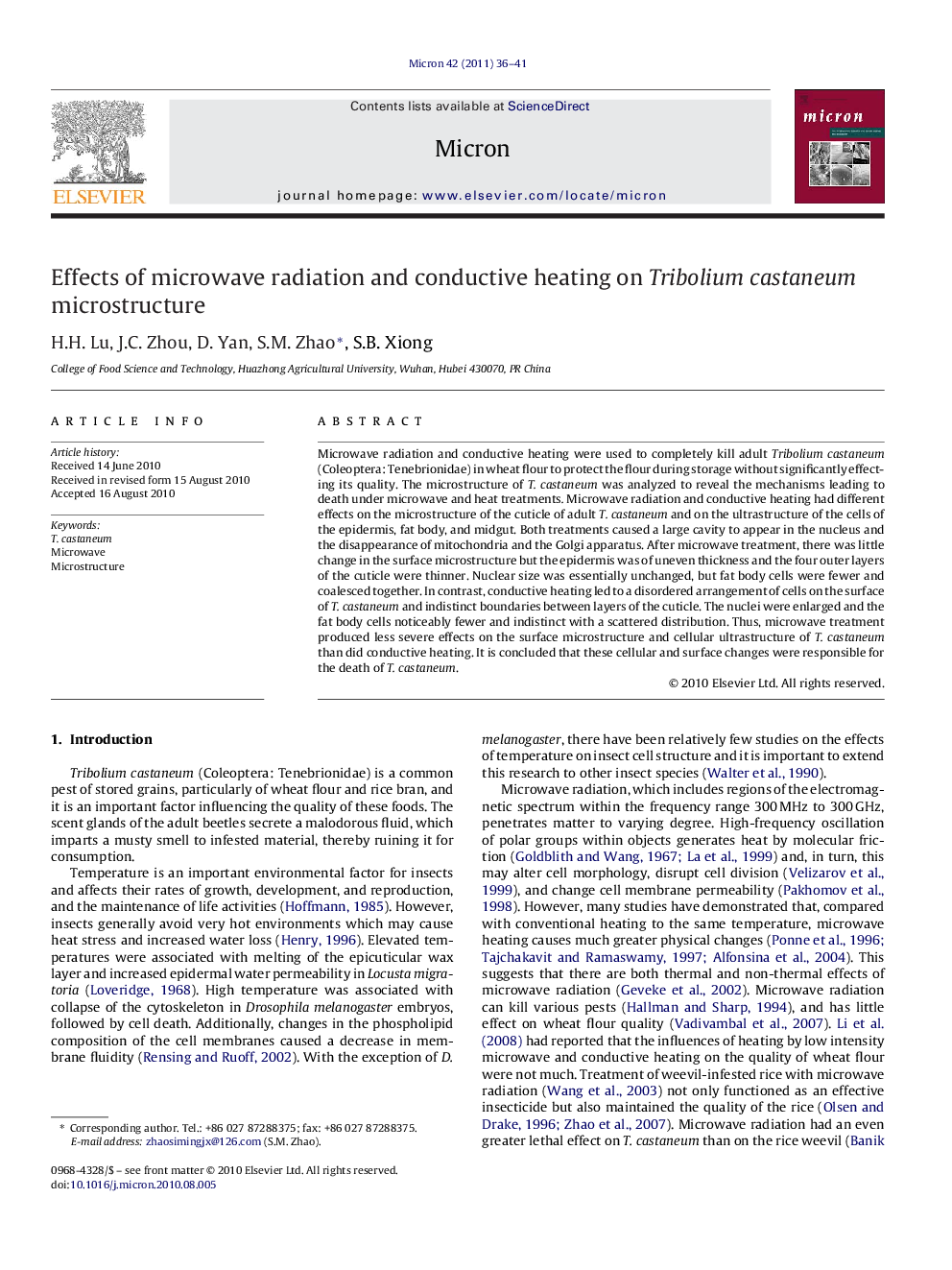| Article ID | Journal | Published Year | Pages | File Type |
|---|---|---|---|---|
| 1589317 | Micron | 2011 | 6 Pages |
Microwave radiation and conductive heating were used to completely kill adult Tribolium castaneum (Coleoptera: Tenebrionidae) in wheat flour to protect the flour during storage without significantly effecting its quality. The microstructure of T. castaneum was analyzed to reveal the mechanisms leading to death under microwave and heat treatments. Microwave radiation and conductive heating had different effects on the microstructure of the cuticle of adult T. castaneum and on the ultrastructure of the cells of the epidermis, fat body, and midgut. Both treatments caused a large cavity to appear in the nucleus and the disappearance of mitochondria and the Golgi apparatus. After microwave treatment, there was little change in the surface microstructure but the epidermis was of uneven thickness and the four outer layers of the cuticle were thinner. Nuclear size was essentially unchanged, but fat body cells were fewer and coalesced together. In contrast, conductive heating led to a disordered arrangement of cells on the surface of T. castaneum and indistinct boundaries between layers of the cuticle. The nuclei were enlarged and the fat body cells noticeably fewer and indistinct with a scattered distribution. Thus, microwave treatment produced less severe effects on the surface microstructure and cellular ultrastructure of T. castaneum than did conductive heating. It is concluded that these cellular and surface changes were responsible for the death of T. castaneum.
